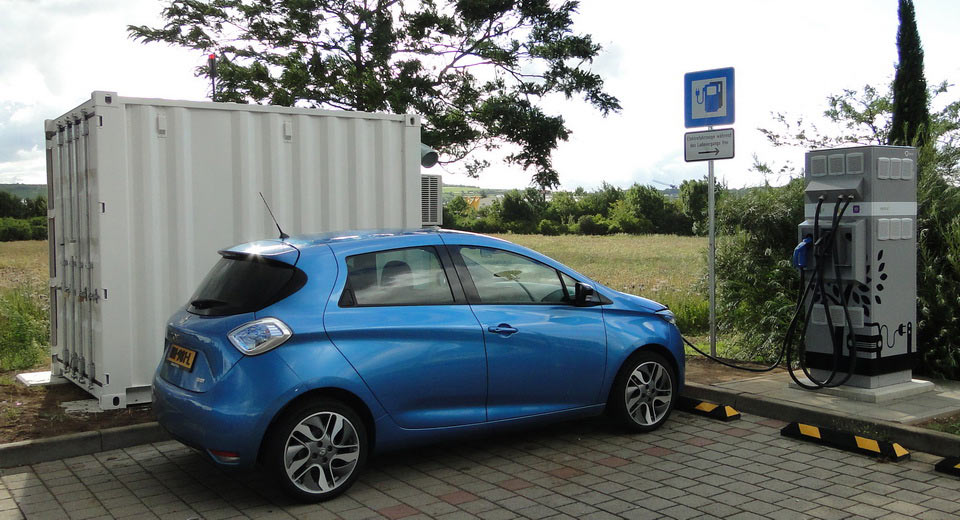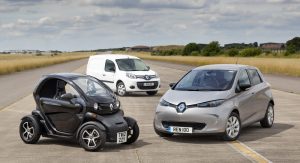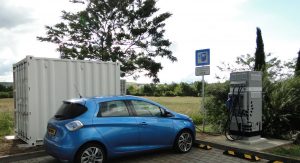Connected Energy, together with Renault, has installed two quick-charge stations which utilize innovative E-STOR technology, on highways located in Belgium and Germany.
The E-STOR energy storage technology was developed by Connected Energy, using second-life batteries from Renault’s electric vehicles. The way the system works is that the batteries are recharged at low power, and releasing stored energy at high power.
Using this concept, it’s possible to build electric vehicle charging stations in locations where constructing a high power connection to the power grid would have otherwise proved too costly.
“We are developing a range of E-STOR systems, some, like the two installed in Belgium and Germany are designed specifically to enable lower cost more sustainable electric vehicle charging so it’s great to see these in action,” said Connected Energy exec, Matthew Lumsden. “We are now talking to several parties about projects in the UK and Europe and look forward to wide scale roll out in coming months.”
Renault is also doing its part, by re-using the batteries from its electric vehicles for the sake of stationary energy storage. While EV batteries usually have a service life of about eight to ten years, they still have capacity for further use in stationary applications – basically extending their life before they get recycled.
“Groupe Renault is supporting the development of charging infrastructures to simplify the daily life of electric vehicle drivers. Using our second-life batteries in fast EV charger contributes to progress by providing charging station operators with economical solutions. Moreover, it is a perfect example of circular economy implementation,” added Nicholas Schottey, in charge of the Electric Vehicle Batteries and Charging Infrastructures Program.
In the end, these types of solutions should have multiple applications, from networks of quick-charging stations, to individual homes, multiple-unit residences and even industrial sites.





